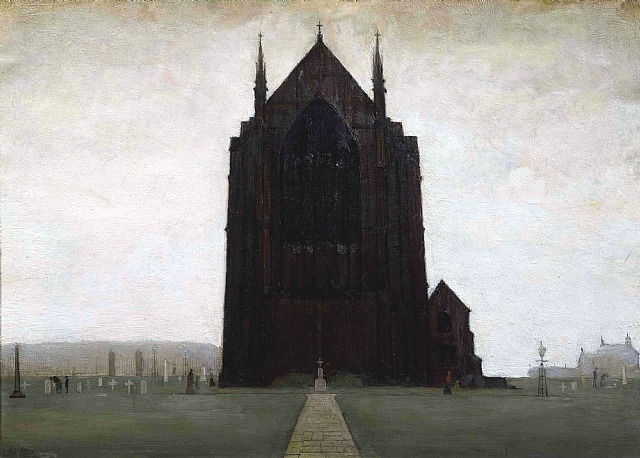Lowry and the Painting of Modern Life at Tate Britain

This is the first showcase of LS Lowry’s work on this scale in London since the Stretford-born artist’s death in 1976. It is a long overdue celebration of what are now recognised as some of the most striking and atmospheric depictions of 20th century industrial England.
The bulk of Lowry’s work is motivated by visions of his native Northwest homeland, Lancashire – an industrial beacon during his life whose landscapes, lives and gradual descent into economic unimportance he dedicated himself to documenting. Semi-constructed in the imagination, his paintings sit between reality and private wonderment.
Lowry and the Painting of Modern Life shatters the limits of the overused Lowry image stock with a breathtaking display of skill and emotional intelligence that blazes in each and every image. His pencil drawings from the 1920s reveal a staggering observational ability and paintings such as St. Augustine’s Church compound evidence of an eye-wateringly acute graphic expertise.
The collection invites comparison between Lowry and the artists who influenced his approach, such as Adolphe Valette (Lowry’s teacher at Manchester Municipal School of Art) and Maurice Utrillo. Techniques of the De Stijl artists also come to mind with the flat planes of perspective, constructed with diagrammatic line work and geometry. The significant volume of work highlights recurring themes and approaches, as well as further dispelling earlier opinions of Lowry as a “naïve” craftsman.
When an artist depicts their own environment, their personal and creative characteristics can be understood as a product of their inhabited place. Here, Lowry’s experience of the Northwest as a native means observations of its inhabitants, buildings and scenery are drawn from a deeper understanding of the working-class way of life: people are shadowless, buildings are unadorned, grass in the towns is grey more than it is green. The haunted drama in the show’s Ruined Landscapes section illustrates how far the industrial revolution changed this green and pleasant land: images such as River Scene (Industrial Landscape) explore the ghostly murk of the moorland, punctured with symbols of mechanised activity surrounding the villages and towns. Lowry recognises a relationship that has turned sour but remains unbreakable – the open countryside of the North (Cumberland Landscape) alongside its urban claustrophobia (A Manufacturing Town).
Lowry and the Painting of Modern Life is as emotionally immersive as it is informative. Whatever your native soil, you cannot avoid being moved by this most imaginative and sharp-minded of artists. Lowry: a self-proclaimed “simple man” perhaps, a master British painter, most definitely.
Hannah Wallace
Lowry and the Painting of Modern Life is at Tate Britain until 20th October 2013. For further information or to book visit the gallery’s website here.
























Facebook
Twitter
Instagram
YouTube
RSS